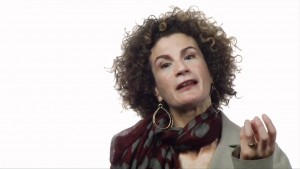Islamic Philosophy: The Legacy of New media Art
Should criticism of art be the exploration of the philosophy of art? If by art we mean making sense of infinite folds in nature through their temporal or at least transient representations and if art, thereby, transcends the limited possibility of its being kitsch, art criticism is by and large the criticism of the philosophy of art or, for that matter, the philosophy of very life. The complex and extremely difficult problem of defining Islamic art gets eased off, to a certain extent, by a promising verse in the Quran: “Have you not considered how Allah presents an example, [making] a good word like a good tree, whose root is firmly fixed and its branches [high] in the sky?” So a minaret, if it is taken as a word, enfolds in it the folds of infinity which gives it depth and rootedness and unfolds this possibility every moment we perceive it. None has expressed this idea more profoundly than Laura Marks and her Enfoldment and Infinity: An Islamic Genealogy of New Media Art solemnly evokes it.
Laura Marks’ immediate indebtedness is to Gilles Deleuze, the French Philosopher who theorized the notions of ‘unthought’, ‘rhizome’, ‘becoming’, univocity of being etc. In Deleuze and Race, edited by Arun Saldanha and Jason Michael Adams, Laura has written a brilliant study A Deleuzian Ijtihad: Unfolding Deleuze’s Islamic Sources Occulted in the Ethnic Cleansing of Spain where she brings the influential French thinker’s radical thought closer to the antinomian philosophy of Ibn Sina, to the same streams and currents in Ismailism and illuminist thinking of Mulla Sadra and Suhrawardy.
Her argument in that monograph is that prior to ethnic cleansing in Spain-which inaugurated the concept of racism which later spread across the globe through colonialism-Iberian Muslim intellectuals, especially Ibn Sina said about essence, existence, ontology, the tripartite division of being (necessary; contingent; and possible being) leading to non-being, which has saturated the philosophy of west after ethnic cleansing with its true genealogy and source forcefully obliterated.
Firstly, there was the translation movement which “exposed Christian scholars to Muslim influence” even as it “tended to elide the contributions of all but the Latin scholars. This and the Latinisation of Arabic Names were first steps in the European reterritorialisation, the Christian whitewashing, of received Islamic thought.” Secondly, there was the repression and exploitation (the first step towards cleansing) of Muslims and Jews in Spain in 1492 under the Castilian monarchs Ferdinand and Isabella, when Columbus carried out the monarchs’ mission to find new sea route to India (six years prior to Vasco da Gama’s landing in Calicut). This was followed by the expulsion of Muslims and Spain two centuaries later. Finally, “what remained of the Muslim and the Jewish heritage of Castilian Spanish philosophy and culture would be mostly homogenised within the Castilian culture; what could not be subsumed would be excluded.” So the challenge, Laura believes, is to pit contemporary western philosophy against its true legacy in Islamic philosophy. “I imagine how rich modern philosophy might have been if west European and Islamic philosophies had maintained contact. If only Deleuze had been able to engage with the thought of Mulla Sadra! If Leibniz had had direct intercourse with Islmaili Shi’ite thought… Whitehead with kalam theology…and Deleuzianism with contemporary Muslim scholars like Mohammed Arkoun.”
While Muslims were being persecuted after 1492, the conquered Muslims of Spain received a deeply compassionate message from a mufti in Oram, Algeria. The ‘Oran Fatwa’ allowed Muslims to practice their religion in secret throuh dissimulation (taqiyya).” This led the philosophy and thoughts of Muslim Spaniards to be occult. Hence, racism. “Racism, and the word race, “arose in Spain when it was no longer possible to tell a person’s religion from her or his appearance. Racism arose as a need to make visible a difference that was not visible.” “The elaborate hedging that charecterises the usage of raza and Moor bears this out, as did the Inquisitors’ need to cast their eyes down from a man’s face, where no sign of religious difference showed, to his penis.” “Philosophy too underwent a kind of coagulation” after Christian adaptation and severing it from its Islamic origins.”
How can philosophy, forced out from its visibility to occultism, emerge into the spectrum so as to be perceptible? Can we say minarets are the circumcised penises of Muslim civilization? The vacuum is neatly filled in by Islamic art-its rich tapestry, well-carved minarets, multi-dimensional architecture shedding the light on virtual and digital in many possible ways. Actual as a site for many folds of the real to be enfolded signifying its potential for unfolding it in unpredictable ways (becoming and virtuality) is the succinct summary of Islamic art. Here Deleuze meets Ibn Sina and pays obeisance. Laura Marks’ Enfoldment and Infinity is a sheer tour de force.























Connect
Connect with us on the following social media platforms.